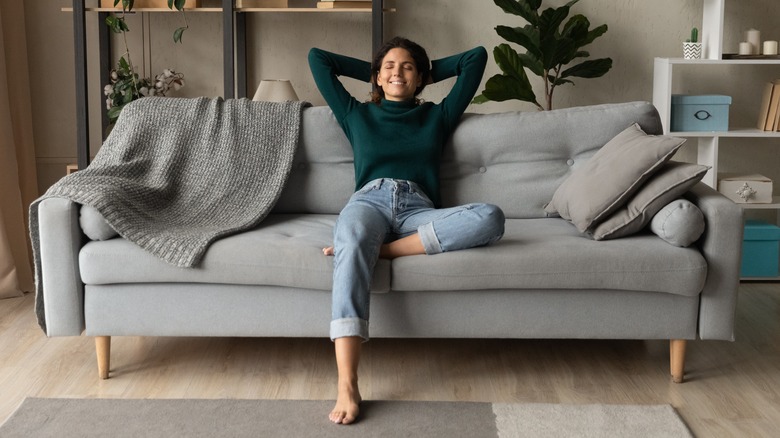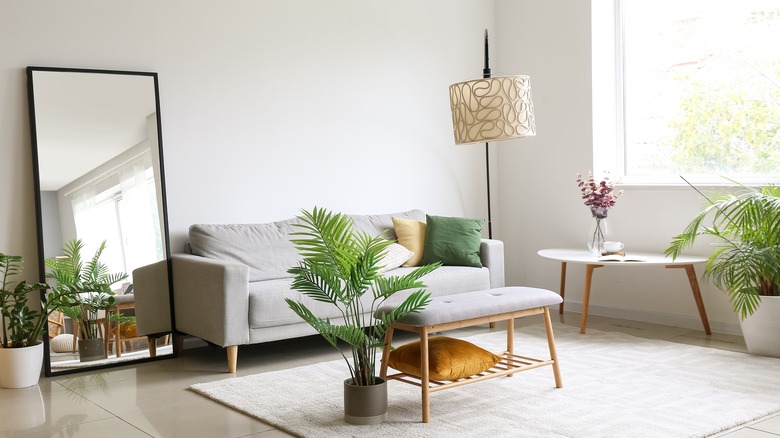Should Your Couch Be Touching Your Living Room Wall?
Before making a big purchase, you spend plenty of time ensuring it's the right choice. This is especially true when it comes to your living room couch. To find the perfect couch, you have to consider the orientation and how it fits in your space, says Explore Home, especially if the couch has a chaise connected to it. And measuring the furniture ensures it will fit well in your space. All of this contributes to the layout and functionality of your living room. But as you create the layout, there might be one aspect you're overlooking.
How you place your furniture in the room is important, and one aspect to consider is whether it will sit against the wall. You might be thinking, where else will furniture like a couch go if not against the wall? But many experts and interior designers advocate for floating your furniture, or having your furniture in the center of the room rather than against the wall, according to Liv Space. This can often involve leaving a foot or more between the walls and furniture. Though interior designers usually prefer pulling the living room couch away from the wall, it's not a hard and fast rule.
In favor of floating
The couch is often the anchor of the living room, so its placement is incredibly important. Once you've found the place for the couch, whether it's in front of a fireplace, television, or centered in a conversation area, consider pulling it away from the wall. While it may seem like it would be a waste of a room's square footage, it can actually be an opportunity to use more wall space for storage options like bookshelves, according to Hayneedle. If you're blessed with a living room with lots of windows, floating your furniture allows more natural light in since the couch isn't blocking the windows.
Bringing the furniture toward the center of the room can make a larger space feel cozier or be a way to define an open floor plan. You can anchor the space and make it feel cohesive by using an area rug for your living room vignette. However, if you don't have a large, open space, it may seem like floating your furniture isn't possible. But Style by Emily Henderson explains that even 3 to 5 inches can make a difference and create an airy feeling in a small space. Pulling the couch away from the wall can make the room less cramped.
To float or not
While it may be the preferred option for most interior design experts, floating furniture isn't always possible. Some rooms don't have the inches to spare or are awkwardly shaped. It also may depend on the other features and decor of the room. For example, your couch should sit a certain distance from your television. According to Furnishing Tips, for every 8 inches of screen, you should sit 1 foot away from the television. So a 50 to 55-inch television should have a couch that's 6 to 9 feet away. This protects the eyes and provides the most optimal image clarity. A living may also have a fireplace or built-ins that require you to put your couch in a certain place and possibly against the wall.
If you can't float your furniture, it's not the end of the world. As said before, even a few inches make a difference. But if you really can't spare the space, be sure to protect your wall from getting scuffed with bumpers or felt, suggests LinkedIn. These can prevent the back of the couch from rubbing up against the wall and leaving scratches or dents. Scuff and scratch-resistant paints are also an option to protect a wall if a couch has to be up against it.


